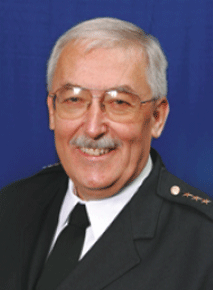
Over the last several years, we have witnessed a remarkable, and horrific, increase in the level of drug-related violence in Mexico. In 2008, more than 6,200 people died as a result of drug-related violence. So far this year, more than 1,000 people, including police officers, judges, prosecutors, soldiers, journalists, politicians, and innocent bystanders, have been killed.
This violence is not contained to Mexico. States along the southwestern U.S. border and cities throughout the United States have reported increases in crime and violence that can be traced back to organizations based in Mexico. For example, the Arizona attorney general recently advised that over the last two years, the city of Phoenix has reported more than 700 kidnappings for ransom—more than any other U.S. city—and that the vast majority of these kidnappings were related to the Mexican drug trade. Even more troubling is the fact that Arizona law enforcement agencies believe that twice as many kidnappings went unreported.
This spike in violent activity is a tragic and unacceptable situation that poses profound risks not just to Mexico, but to the United States and countries throughout the region and the world.
At the January 2009 meeting of the IACP Executive Committee, Acting Director Michael Sullivan of the Bureau of Alcohol, Tobacco, Firearms, and Explosives (ATF) and Acting Administrator Michele Leonhart of the Drug Enforcement Administration (DEA) provided the IACP governing body with a comprehensive briefing on the situation in Mexico, its impact on the United States, and the efforts under way to combat these criminal organizations and reduce the level of violence.
This briefing made clear that the scope of these criminal organizations is astounding. According to the National Drug Threat Assessment 2009, prepared by the National Drug Intelligence Center, Mexican drug trafficking organizations (DTOs) represent the greatest organized crime threat to the United States.1 The influence of Mexican DTOs over domestic drug trafficking is unrivaled. In fact, this report estimates that a vast majority of the cocaine available in U.S. drug markets is smuggled by Mexican DTOs across the U.S.-Mexico border. In addition, Mexican DTOs control drug distribution in most U.S. cities and are gaining strength in markets that they do not yet control.
For example, in my home state of Illinois, the Justice Department found that three Mexican drug cartels—Federation, Gulf Coast, and Juárez—are active in cities throughout the state. According to the DEA, Mexican drug cartels supply most of the cocaine, methamphetamine, and marijuana distributed in the Chicago area. Finally, reports suggest that $10 to $24 million in drug proceeds are sent from Chicago to the southwestern border each month.
Illinois is not alone. Mexican drug cartels are now present in at least 230 U.S. cities, up from about 50 cities in 2006. Mexican drug traffickers affiliated with the Sinaloa, Gulf, Juárez, and Tijuana cartels maintain working relationships with at least 20 street gangs, prison gangs, and outlaw motorcycle gangs that operate in urban and suburban communities throughout the country. These affiliations have significantly increased the availability of illicit drugs in many of these areas.
Of course it is not only the drugs being brought into the United States that is a problem, but also what the United States is “exporting” to Mexico. It is an undisputable fact that the weapons and firearms used to fuel the drug-related violence in Mexico can be traced back to guns procured legally or illegally in the United States. Over the last several years, ATF has arrested more than 1,000 individuals and seized more than 12,000 weapons that were en route to Mexico.
ATF has reported that an analysis of firearms trace data over the past three years indicates that Texas, Arizona, and California are the three largest source states for firearms illegally trafficked to Mexico. However, ATF trace data have also established that drug traffickers are acquiring firearms from other states as far east as Florida and as far north and west as Washington.
Clearly, combating these gangs and reducing violence in our communities and along the border is an effort that will require the resources and the commitment of law enforcement agencies at the federal, state, tribal, and local levels, as well as international cooperation among agencies.
We must confront this challenge directly in a unified and coordinated method, because far too often, we have seen the corrupting influence of drug traffickers weaken the institutions of a state and destroy the fabric of a society.
We must speak with one voice! We must guarantee that we, as the collective voice of the international law enforcement community, work to ensure that the world stands firm in the face of the challenges posed by drug traffickers, drug dealers, and drug users.
This is a war we must win. We have no other option. The lives and well-being of too many are at stake. Our inaction or failure in this effort will affect not only our communities or regions but also our families and our officers as well. ■
Note:
1National Drug Intelligence Center, U.S. Department of Justice, National Drug Threat Assessment 2009, December 2008, http://www.usdoj.gov/ndic/pubs31/31379/31379p.pdf (accessed March 23, 2009).


